即将开幕|「飞去留痕」 Fleeting Traces 将于3月11日启幕
![]() {{newsData.publisher_name}}
{{newsData.update_time}}
浏览:{{newsData.view_count}}
{{newsData.publisher_name}}
{{newsData.update_time}}
浏览:{{newsData.view_count}}
来源 | {{newsData.source}} 作者 | {{newsData.author}}


Artist Xiao Hong
策展人 | 杜曦云
Curator Du Xiyun
展 期 | 2023.3.11-5.7
Duration 11th March to 7th May 2023
开 幕 | 2023.3.11 4pm
Opening 4 pm, 11th March 2023
地 点 | 林大艺术中心(北京空间)
Location Linda Gallery (Beijing Space)
林大艺术中心荣幸宣布,肖红个展「飞去留痕」Fleeting Traces 将于本周六3月11日下午4时在林大艺术中心北京空间启幕。艺术家开放吸收了多方面的艺术语言来表达个体在剧变时代中的状态,敏感和沉思转化为独具一格的美学特征,此次展览将呈现艺术家肖红自2019年以来在抽象领域的全新探索和创作实践。
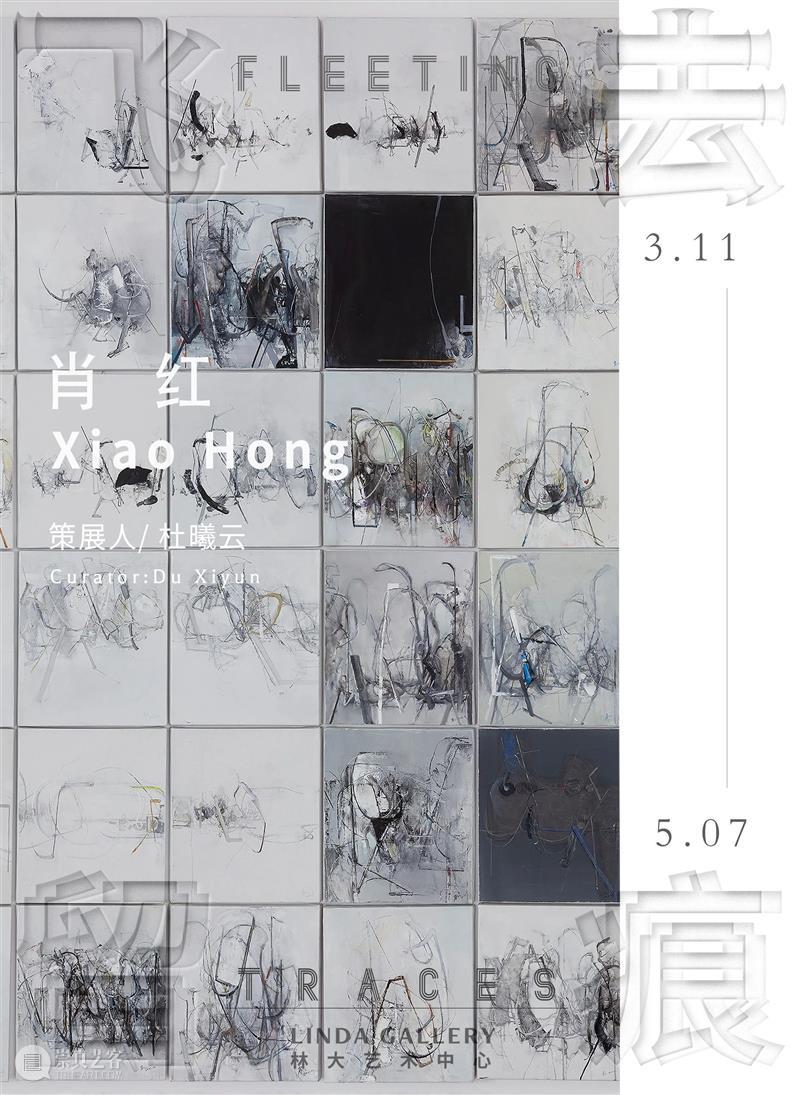
飞去留痕:肖红的抽象绘画
创造,是无中生有。以“创造”为本分的人,尤其能体会到其中滋味。画家保罗·克利(1879-1940)把他的创造过程描述为“用一根线条去散步”,这很生动形象:在这个过程中,艺术语言和心灵状态被牵引出来了……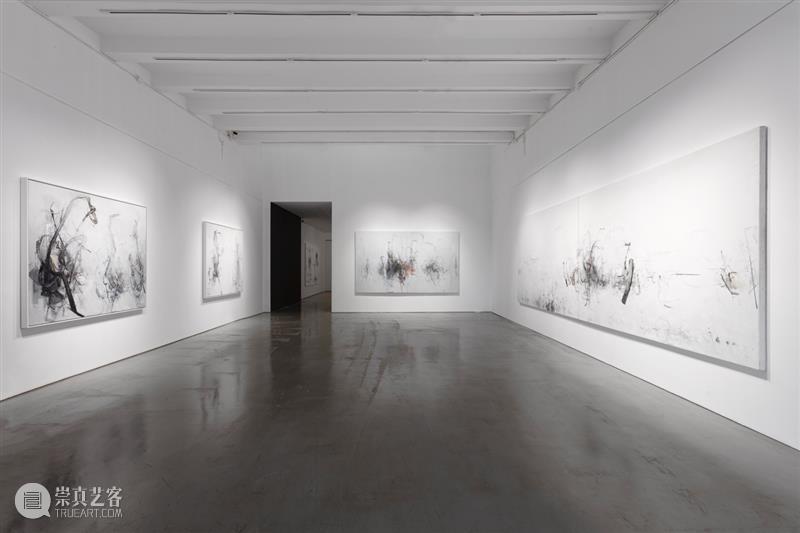
「飞去留痕」展览现场2019年,肖红开始了形态抽象的绘画。和他那些预设图像,逐层推进的具象绘画不同,这些抽象画没有参照系和蓝本,主要在本能的驱动下生长、蔓延。这种绘画方式,能让绘画者的精神状态更真实地流露、更充分地释放出来,也会更开放地遭遇未知:在认识自己方面,也在美学转化方面。对肖红来说,这种剧烈转变是前所未有的,走出持续多年的惯性,必然会经历试错、涂抹乃至废弃等,但几年后回看,新的系列作品已经蔚然成型。「飞去留痕」展览现场
这些绘画大多以浅灰色为背景,充满速度感的灰黑直线尖利硬梗地横亘在画面上,夹杂各种曲线,形成紊乱芜杂的空间。冷、硬、乱、快,成为画面的明显特征。时而有粉红、蓝紫、青绿、橘黄、殷红的线、面点缀其中,在灰暗的基调中增添了趣味。
「飞去留痕」展览现场
作品一旦完成,就和作者无关了,和具象艺术相比,能让人更加自由开放想象的抽象艺术更是如此。这些绘画的基本视觉印象是:基调寒冷荒凉,生硬干涩的线条如鞭笞刀割般在画面上快速划、切、割、劈,空间充斥各种无序、断裂、突兀、愕然。悦目赏心的和谐、温润、柔软在这些绘画中基本缺席,虚无乃至虚妄、荒谬感弥漫其中,只有间或出现的鲜艳色彩让人眼前一亮,精神也为之一振。「飞去留痕」展览现场
关于这批抽象绘画的成因,肖红自己的描述是:“来源于我的梦境,我曾做了好几个月这样的梦,梦境是从具象的影子逐渐变成了一种抽象的符号。一开始是小孩子的影子,他们上下学时一起嬉戏打闹,最后人影消失了,一点一点变成一种棍子似的抽象符号,这些符号在梦里扭来扭去……我的梦最早是很清晰的人影,但我感觉不对劲,他不是我要找的人,我也无法辨认出他的身份。后来,人影变成了棍子,变成了一种点线面的构造,最后似乎变成了画。”「飞去留痕」展览现场
梦境是超验的,无法测度,难以思议。但肖红描述的梦境,和他的成长经历有关。少年时搬迁移居、成年后出走返乡,人到中年和儿时伙伴们相聚时,谈起很多往事,他们居然全都没有记忆,仿佛彼此都在痴人说梦。肖红反复确认这一点后,茫然惊诧、失魂落魄,这种心有戚戚的相逢同忆,以他在宴终人散后独自一人放声痛哭收场……
生命的经历何其复杂、具体、微妙!劳碌奔忙尚且自顾不及的十丈红尘中,每个人都很难去关心别人经历了什么。绘画是肖红心灵独自梳理的方式、释放的通道、审视的镜子。他以前的具象绘画里,从社会变迁的角度,汇聚各种人生经历来显现“我从哪里来?”当他对灵魂的真相继续追问时,走出社会学维度,直接捉摸精神、心灵,情不自禁地走向了抽象绘画——抽象艺术更能裸露灵魂。
「飞去留痕」展览现场
行动中的人往往是浑然忘我的。肖红在抽象绘画中所流露的,不可避免地和他的人生感受相关,不自觉地和他以前的具象绘画连缀起来。1966年出生于中国北方的他,在时代洪流的裹挟中经历各种剧变,身不由己和心甘情愿难解难分,言不由衷和倾吐衷肠相弃相生。费尽周折出离喧嚣试图沉静时,梦境里、深心处不期而遇的,是困惑、迷茫、痛苦、悲伤、愤怒、郁闷、残酷、冰冷、空白、虚无……这些心灵状态和灵魂图景,是从他的绘画中映射、反射、折射出来的。尖利硬梗、芜杂紊乱、冷酷茫然的画面,仿佛被咒诅之地:“地必为你的缘故受咒诅;你必终身劳苦才能从地里得吃的。地必给你长出荆棘和蒺藜来……”(《创世记》3章17-18节)
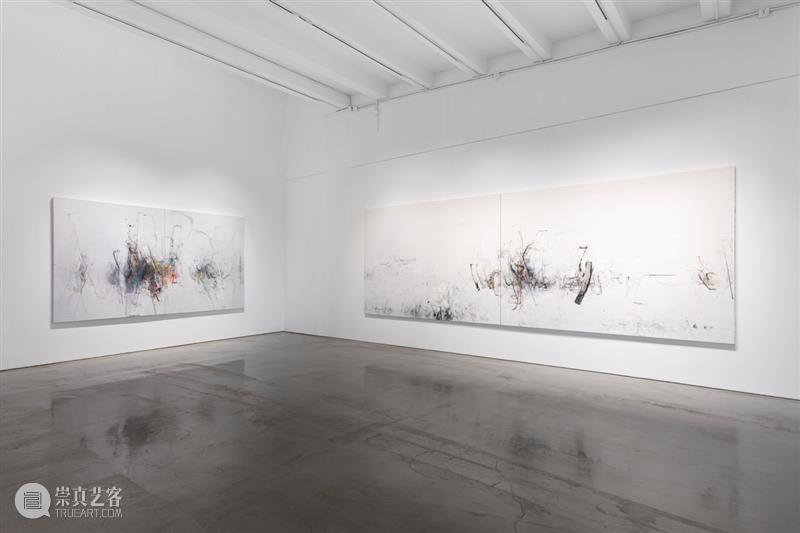
「飞去留痕」展览现场
视觉本体魅力方面,他继续延伸着自己的才华:冷暖色并置对冲、实和虚相互映衬、线与面结合共构,放肆发挥后紧密控制大局。其中的某些元素和方法,从他观摩敦煌壁画后延续至今,转化为视觉化的喟叹——喟叹心灵的如此这般状态。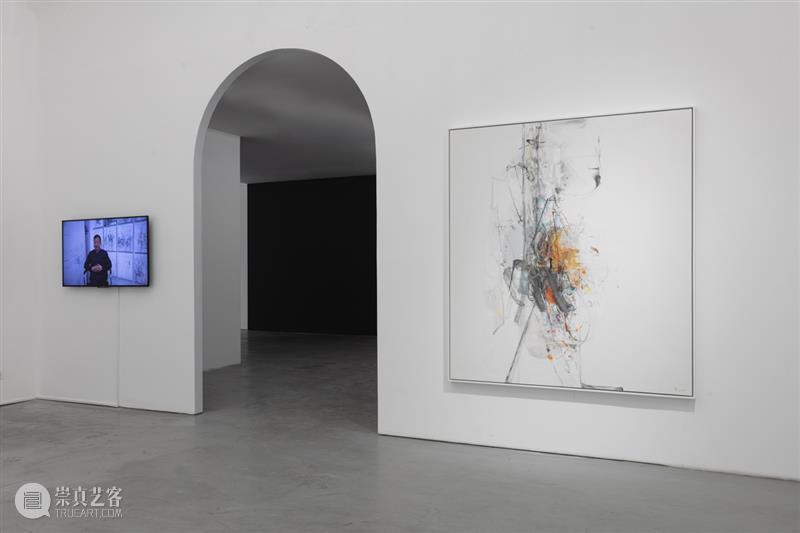
「飞去留痕」展览现场
肖红的人生经历和灵魂图景,是非常特殊,还是相当具有共性?从肖红出生的1960年代至今,全球秩序中的中国发生了什么样的明显改变?有哪些是恒久不变?十几年前,肖红从北京离场,在呼和浩特休养生息至今,这十几年里,尤其是他涂绘这批抽象绘画的这几年,国际局势和本土处境是何等状况和趋势?更宏观深邃的角度,人类的宿命是什么?“人为妇人所生,日子短少,多有患难;出来如花,又被割下,飞去如影,不能存留。”(《约伯记》14章1-2节)但雁过尚且留痕,肖红在二维画面上不断涂、抹、刻、划着点线形色,这一幅幅刀锋铁线、荒寒虚无的画面,为观者提供了新颖的视觉和开放的想象空间。

「飞去留痕」展览现场
决定走向抽象来审视灵魂状态/尘世实底,寻找精神归宿/救赎之途,是肖红对自身体验和冲动的忠实。从1910年康定斯基画出《小小的世界》开始,抽象艺术至1960、70年代已经蔚为大观、瓜熟蒂落。极简主义之后,边界彻底开放的当代艺术,不再以美学语言的原创为主旨。这种格局中,中国人在抽象艺术方面能贡献出什么?肖红绘画中流露出的灵魂状态和精神归宿,依然和人类挥之不去的大哉问息息相关:我们从哪里来?我们是谁?我们到哪里去?“一切有为法,如梦幻泡影。如露亦如电,应作如是观”是一种解答。“总意就是:敬畏造物主,谨守祂的诫命,这是人所当尽的本分。因为人所做的事,连一切隐藏的事,无论是善是恶,造物主都必审问”(传道书 12:13-14 和合本)是另一种解答。

「飞去留痕」展览现场
关于艺术家
肖红,1966年出⽣于中国内蒙古,毕业于内蒙古师范⼤学美术系油画专业。后就读于鲁迅美术学院“克劳德·依维尔”写实主义油画班,并进修于中央⼯艺美术学院装饰艺术系,主攻壁画史。
主要个展项目:“飞去留痕”,林大艺术中心,北京,中国(2023);“脸”,新加坡当代美术馆,新加坡(2011);“脸”,印尼国家博物馆,雅加达,印度尼西亚(2011);“脸”,林⼤艺术中⼼,北京,中国(2010);“异动的⾯膜”,林⼤艺术中⼼,北京,中国(2008);“⾯具”,林⼤艺术中⼼,新加坡(2008);“知识青年”,林⼤艺术中⼼,北京,中国(2007);“知识青年”系列,季节画廊,雅加达,印度尼西亚(2006);“知识青年”,季节画廊,新加坡(2006);“知识青年”,季节画廊,北京,中国(2006);“知识青年”,季节画廊,北京,中国(2005);“肖红油画个展”,Chouinard Gallery,⾹港,中国(2002);“肖红油画个展”,Chouinard Gallery,⾹港,中国(2001);“肖红油画个展”,秦昊画廊,北京,中国(1999)。
主要群展项目:“几⼈相忆在江楼”当代艺术展,林⼤美术馆&林⼤艺术中⼼,北京,中国(2007);“波恩艺术节,波恩,德国(2006);“末法展”,北京东京艺术工程,北京,中国(2005);“探寻新⼀派”,季节画廊,北京,中国(2004);“探寻新⼀派”,季节画廊,新加坡(2004);冬季展,季节画廊,北京,中国(2003);亚洲艺术双年展,孟加拉、尼泊尔(2001);中国、⽇本、法国油画巡回展,中国美术馆,北京,中国(2001);全国第九届美展优秀作品展,中国美术馆,北京,中国(1999)。
杜曦云,策展人,1978年生。曾任上海昊美术馆副馆长、上海喜玛拉雅美术馆副馆长。曾策划多个展览和项目,近期包括:“赵半狄的小窝”(上海昊美术馆、武汉美术馆、南京四方当代美术馆、集美·阿尔勒国际摄影季、沈阳1905文化创意园、顺德和美术馆、青岛西海美术馆、成都A4美术馆……),2020年至今;“我与博伊斯·王广义”,上海昊美术馆,2021;“确实中的冲击:上海首届全球 NFT 加密艺术展“,上海西岸·油罐艺术公园1号罐,2021年;“我与博伊斯·尹秀珍”,上海昊美术馆,2021;“联合构筑”,苏州金鸡湖美术馆,2020;“我与博伊斯·杨振中”,上海昊美术馆,2020;“我与博伊斯·周啸虎”,上海昊美术馆,2019;“上海文件:匀速运动”,上海喜玛拉雅美术馆,2019年;“蒙塔达斯:亚洲礼仪”,三影堂摄影艺术中心,2018年;“今日之往昔:首届安仁双年展”,2017年;“走向未来:马德里·北京音乐潮”,塞万提斯学院,2017年;“萧条与供给:第三届南京国际美展”,百家湖美术馆,2016年;“北京·798诞生纪(2002-2006)”,宋庄美术馆,2016年。
Fleeting Traces: Xiao Hong’s Abstract Paintings
By Du Xiyun
Creation is to make something out of nothing. Those who specialise in “creating” can especially appreciate this feeling. Painter Paul Klee (1879-1940) described his creative process as “taking a line for a walk,” a vivid and evocative description: artistic language and the mental state are drawn out intertwined in this process…
In 2019, Xiao Hong began creating paintings with abstract shapes. Unlike his figurative paintings with pre-set images and built-up layer by layer, these abstract works have no reference points or blueprints and mainly grow and spread under the impetus of instinct. This painting style allows the artist’s spiritual state to be more authentic and fully expressed and more open to encounters with the unknown regarding self-awareness and aesthetic transformation. For Xiao Hong, this radical change is unprecedented, breaking free from years of inertia, and will inevitably involve trial and error, scribbling, and even abandonment. But looking back a few years later, the new series of works has already taken shape.
Most of these paintings have a light grey background, with sharp and hard black lines full of speed crossing the canvas, interspersed with various curves, forming a chaotic and cluttered space. Cold, hard, messy, and fast become the obvious features of the paintings. Occasionally, pink, blue-purple, turquoise, orange, and dark-red lines and dots added interest to the grey tone.
Once completed, the works have nothing to do with the author. Compared with figurative art, abstract art allows people to imagine more freely. The essential visual impression of these paintings is: a cold and desolate tone, with rough and dry lines quickly swift, chop, cut, and hock on the canvas, like whipping and knifelike, and the space filled with disorder, fragmentation, abruptness, and astonishment. The pleasingly harmonious, warm, and soft elements are absent, replaced by a sense of emptiness, even absurdity, and confusion; occasionally, bright colours appear, brightening people’s eyes and spirits refreshed.
Regarding the origin of this series of abstract paintings, Xiao Hong described it: “It comes from my dreams. I had such a dream for several months: the tangible figures in the dream gradually turned into kind of abstract symbols. At first, the figures were the children playing together on their way to school and back, then they dissipated and gradually transformed into stick-like abstract symbols that writhed in the dream. The earliest thing that appeared in my dream was an exact figure, but I felt something was wrong: he was not the person I was looking for, and I couldn’t identify him. Later, the figure turned into sticks, into a structure made up of dots, lines, and planes, and finally, it seemed to become a painting.”
Dreams are transcendent, immeasurable, and difficult to understand. But Xiao Hong’s dream description is related to his growth experience. He frequently moved when he was young, left his hometown, and then returned when he grew up as an adult. Surprisingly, when he reunited with his childhood friends in middle age and talked about the past, they all lost the memories, as if they had a fool’s talk. After repeatedly confirming this, Xiao Hong was bewildered and stunned. This deeply touched reunion with similar memories and regrets ended with him crying out loud alone after the end…
Just how complex, specific, and subtle the human life experience is! In the hustle and bustle of the world, it is difficult for anyone to care about what others have been through. Painting is the method for Xiao Hong to sort out his soul, the channel for release, and the mirror for examination. In his previous figurative paintings, he gathered various life experiences from the perspective of social changes to illustrate the question of “Where do I come from?” As he continued to question the soul’s truth, he moved beyond the realm of sociology, directly touching the spirit and the soul, and involuntarily turned to abstract painting - abstract art can more fully expose the soul.
People in action are often lost in it. What Xiao Hong expresses in his abstract paintings is inevitably related to his life experiences and unconsciously connected to his previous figurative paintings. Born in northern China in 1966, he experienced various upheavals in the tide of the times, feeling both involuntarily and willing, both insincere and sincere. After much difficulty, when he attempted to quiet his mind away from the hustle and bustle, he unexpectedly encountered confusion, bewilderment, pain, sadness, anger, depression, cruelty, coldness, and emptiness in his dream and deep mind... these states of mind and soul images are mapped, reflected, and refracted from his paintings. The sharp and hard, messy and tangled, cold and bewildered images seem to be cursed: “Cursed is the ground because of you; through painful toil you will eat food from it all the days of your life. It will produce thorns and thistles for you...” (Genesis 3:17-18)
In terms of visual charm, Xiao Hong continues to extend his talent: juxtaposing warm and cool colours, contrasting solid and void spaces, and combining lines and surfaces to create a tightly controlled whole after free play. Some of these elements and techniques, which he observed in the Dunhuang murals, have been transformed into visual sighs - sighs for the state of the soul.
Are Xiao Hong’s life experiences and soul images unique, or do they have a certain commonality? Since the 1960s, when Xiao Hong was born, what significant changes in China have occurred in the global order? What has remained unchanged? More than a decade ago, Xiao Hong left Beijing and has been self-cultivation in Hohhot since then. What was the situation and trend of the international and local circumstances in these years, mainly when he painted this series of abstract paintings? And from a more macro perspective, what is humanity’s destiny? “Mortals, born of woman, are of few days and full of trouble. They spring up like flowers and wither away; like fleeting shadows, they do not endure.” (Job 14:1-2) However, even the wild goose left traces while fleeting. Xiao Hong continuously paints, smears, carves and draws dots, lines, shapes, and colours on the two-dimensional canvas. These sharp-edged and desolate images provide viewers with novel visual and open imaginative spaces.
The decision to turn to abstraction to examine the state of the soul/the essence of the world, and to seek a spiritual home/path to redemption, is a faithful expression of Xiao Hong’s personal experiences and impulses. From Kandinsky’s Small Worlds in 1910, abstract art had already become a grand spectacle by the 1960s and 70s and was fully mature. After minimalism, contemporary art with completely open boundaries no longer focuses primarily on original aesthetic language. In this context, what can the Chinese contribute to abstract art?
The soulful state and spiritual destination revealed in Xiao Hong’s paintings are still closely related to the perennial questions humans cannot escape: Where do we come from? Who are we? Where are we going? “All phenomena are like a dream, an illusion, a bubble and a shadow, Like dew and lightning. Thus should you meditate upon them.” That is one answer. “Here is the conclusion of the matter: Fear God and keep his commandments, for this is the duty of all mankind. For God will bring every deed into judgment, including every hidden thing, whether it is good or evil.” (Ecclesiastes 12:13-14 NIV) That is another answer.
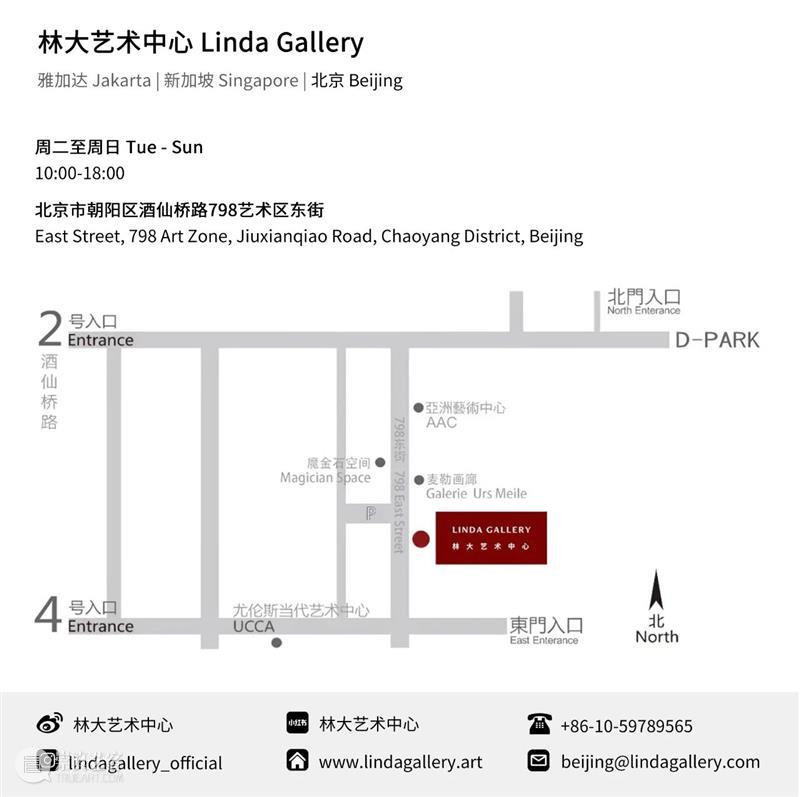
{{flexible[0].text}}

 {{newsData.good_count}}
{{newsData.good_count}}

 {{newsData.transfer_count}}
{{newsData.transfer_count}}





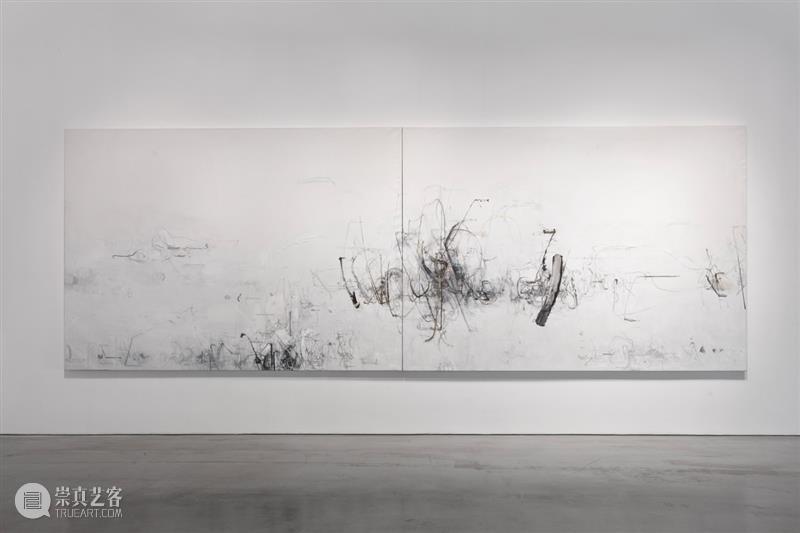

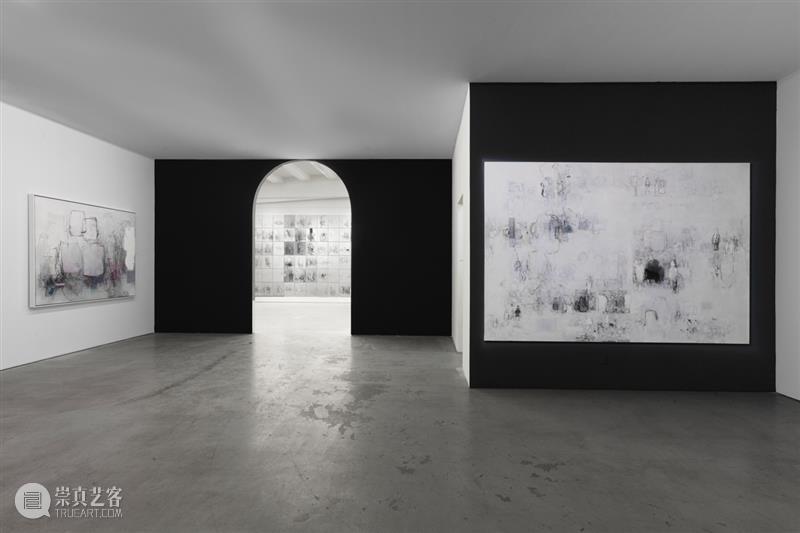
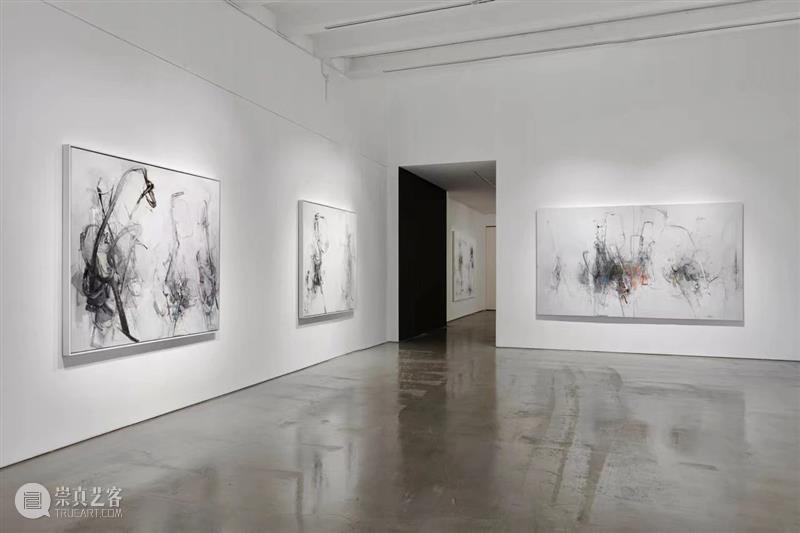




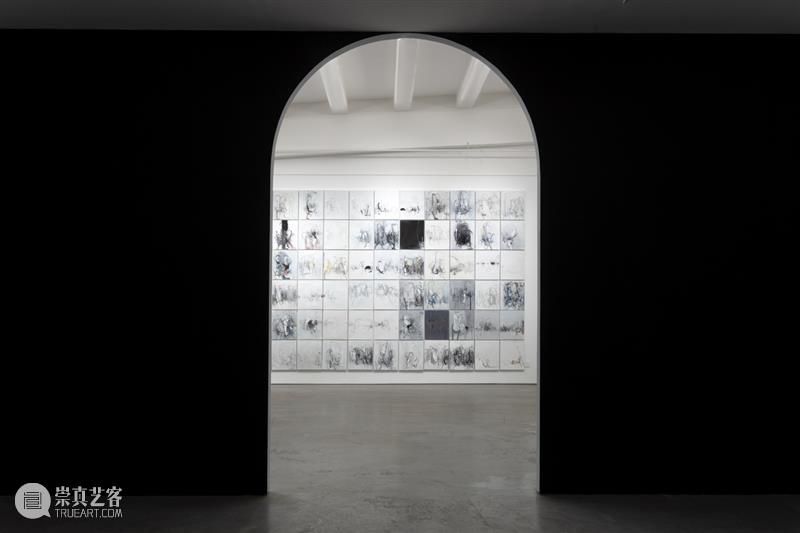

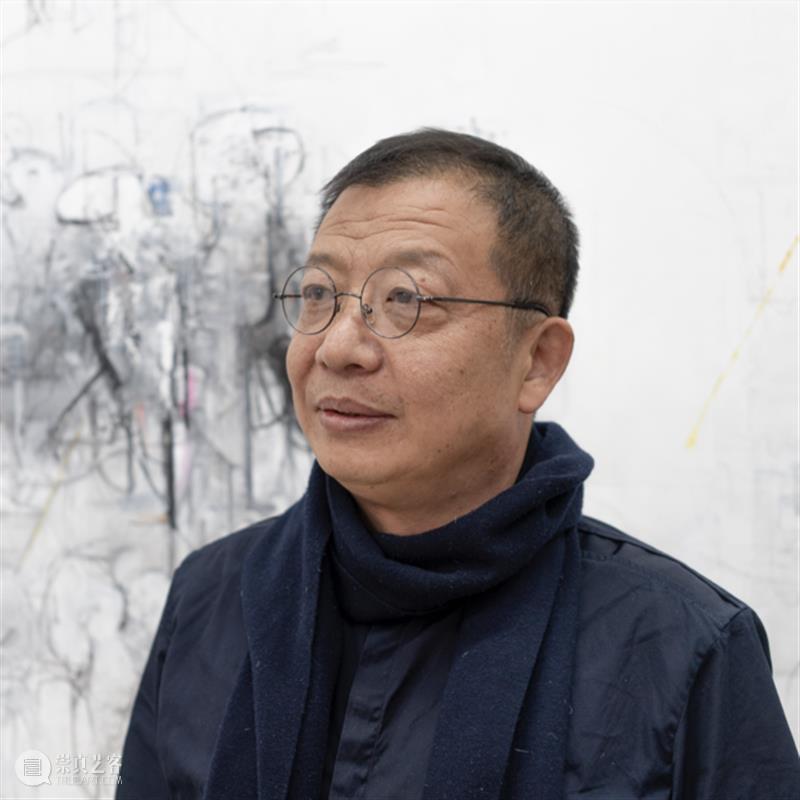
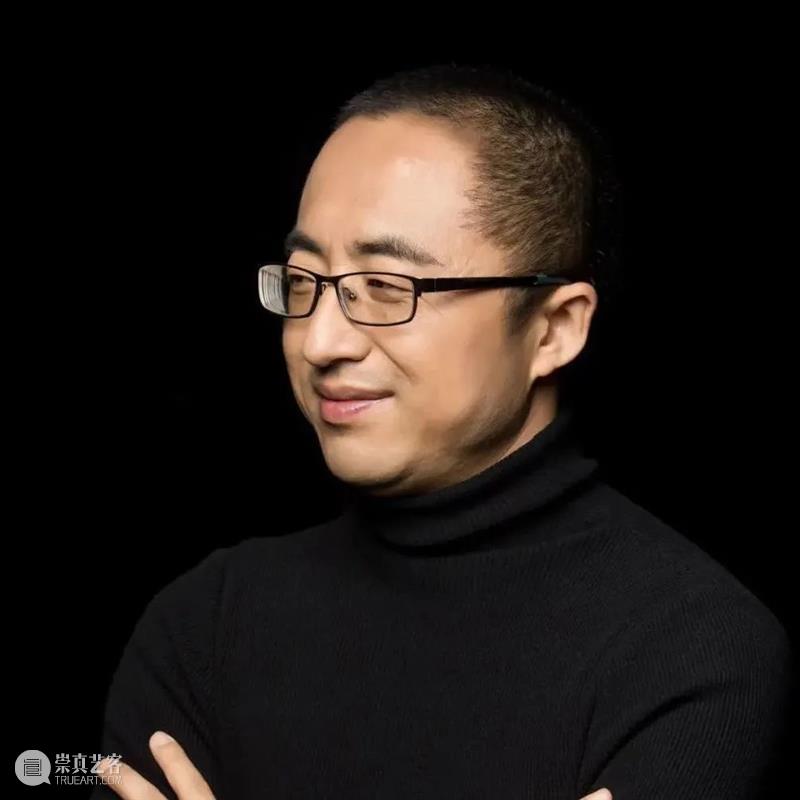








 分享
分享